
Dungeons & Dragons is a fantasy tabletop role-playing game (RPG) originally designed by Gary Gygax and Dave Arneson. The game was first published in 1974 by Tactical Studies Rules, Inc. (TSR). It has been published by Wizards of the Coast since 1997. The game was derived from miniature wargames, with a variation of the 1971 game Chainmail serving as the initial rule system. D&D's publication is commonly recognized as the beginning of modern role-playing games and the role-playing game industry, and also deeply influenced video games, especially the role-playing video game genre.

David Lance Arneson was an American game designer best known for co-developing the first published role-playing game (RPG), Dungeons & Dragons, with Gary Gygax, in the early 1970s. Arneson's early work was fundamental to the development of the genre, developing the concept of the RPG using devices now considered to be archetypical, such as adventuring in "dungeons" and using a neutral judge who doubles as the voice and consciousness of all characters aside from the player characters to develop the storyline.

Blackmoor is a fantasy role-playing game campaign setting generally associated with the game Dungeons & Dragons. It originated in the early 1970s as the personal setting of Dave Arneson, the co-creator of Dungeons & Dragons, first as a setting for Arneson's miniature wargames, then as an early testing ground for what would become D&D.
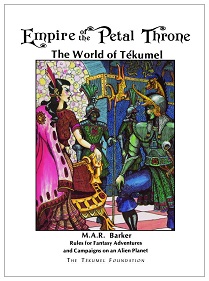
Empire of the Petal Throne is a fantasy role-playing game designed by M. A. R. Barker, based on his Tékumel fictional universe. It was self-published in 1974, then published by TSR, Inc. in 1975. It was one of the first tabletop role-playing games, along with Dungeons & Dragons, and was the first published RPG game setting. Over the subsequent thirty years, several new games were published based on the Tékumel setting, but to date none have met with commercial success. While published as fantasy, the game is sometimes classified as science fantasy or, debatably, as science fiction.
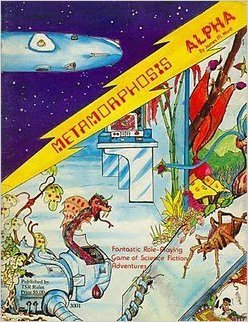
Metamorphosis Alpha is a science fiction role-playing game. It was created by James M. Ward and originally produced by TSR, the publisher of Dungeons & Dragons. It was the first science fiction role-playing game, published in July 1976.
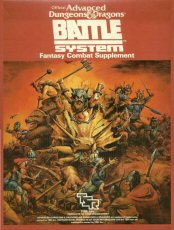
Battlesystem is a tabletop miniature wargame designed as a supplement for use with the Dungeons & Dragons role-playing game. The original Battlesystem was printed as a boxed set in 1985 for use with the first edition AD&D rules. For the second edition of AD&D, a new version of Battesystem was printed as a softcover book in 1989.

Judges Guild is a game publisher that has been active since 1976. The company created and sold many role-playing game supplements, periodicals and related materials, but became best known during the late 1970s and early 1980s as one of the leading publishers of Dungeons & Dragons related materials. Its flagship product, City State of the Invincible Overlord, was the first published RPG supplement to feature a fully developed city environment. The supplement was followed closely by numerous ancillary cities, maps, and other materials published by Judges Guild.

In the Dungeons & Dragons fantasy role-playing game, goblins are a common and fairly weak race of evil humanoid monsters. Goblins are non-human monsters that low-level player characters often face in combat.
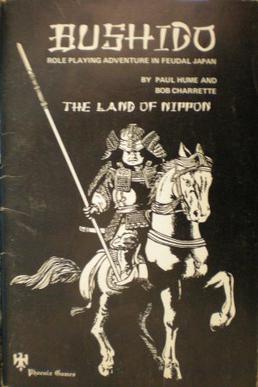
Bushido is a Samurai role-playing game set in Feudal Japan, originally designed by Robert N. Charrette and Paul R. Hume and published originally by Tyr Games, then Phoenix Games, and subsequently by Fantasy Games Unlimited. The setting for the game is a land called Nippon, and characters adventure in this heroic, mythic, and fantastic analogue of Japan's past.

Powers & Perils (P&P) is a role-playing game written by Richard Snider and published by Avalon Hill in 1983 as a boxed set.

The original Dungeons & Dragons boxed set by Gary Gygax and Dave Arneson was published by TSR, Inc. in 1974. It included the original edition of the Dungeons & Dragons fantasy role-playing game. Its product designation was TSR 2002.

Blackmoor is a supplementary rulebook of the original edition of the Dungeons & Dragons fantasy role-playing game written by Dave Arneson.

The Dungeons & Dragons Basic Set is a set of rulebooks for the Dungeons & Dragons (D&D) fantasy role-playing game. First published in 1977, it saw a handful of revisions and reprintings. The first edition was written by J. Eric Holmes based on Gary Gygax and Dave Arneson's original work. Later editions were edited by Tom Moldvay, Frank Mentzer, Troy Denning, and Doug Stewart.

Dungeons & Dragons Master Rules is an expansion boxed set for the Dungeons & Dragons (D&D) fantasy role-playing game. It was first published in 1985 as an expansion to the Basic Set.

Dungeons & Dragons Immortals Rules, written by Frank Mentzer, is a boxed set for the Dungeons & Dragons (D&D) fantasy role-playing game first published by TSR in 1986 as an expansion to the Basic Set.

The Expert Set is an expansion boxed set for the Dungeons & Dragons fantasy role-playing game. It was first published in 1981 as an expansion to the Basic Set.

High Fantasy is a fantasy role-playing game system originally published by Fantasy Productions in 1978. A second edition in 1981 and several subsequent books were published by Reston Publishing that featured solo adventures using the High Fantasy system. The game received mixed reviews in game periodicals including White Dwarf, The Space Gamer, Different Worlds, Ares, and Dragon.
Richard Leonard Snider was a game designer who worked primarily on role-playing games.
Abyss was a gaming magazine first published in 1979, edited by Dave Nalle and published by Ragnarok Games. It was headquartered in Washington, D.C.
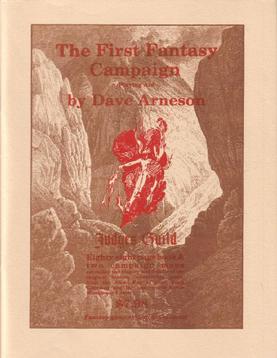
The First Fantasy Campaign is a supplement for fantasy role-playing games written by Dave Arneson and published by Judges Guild in 1977.



















